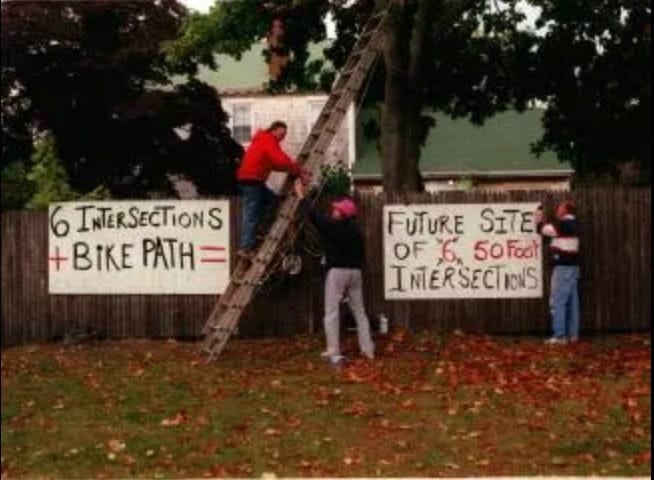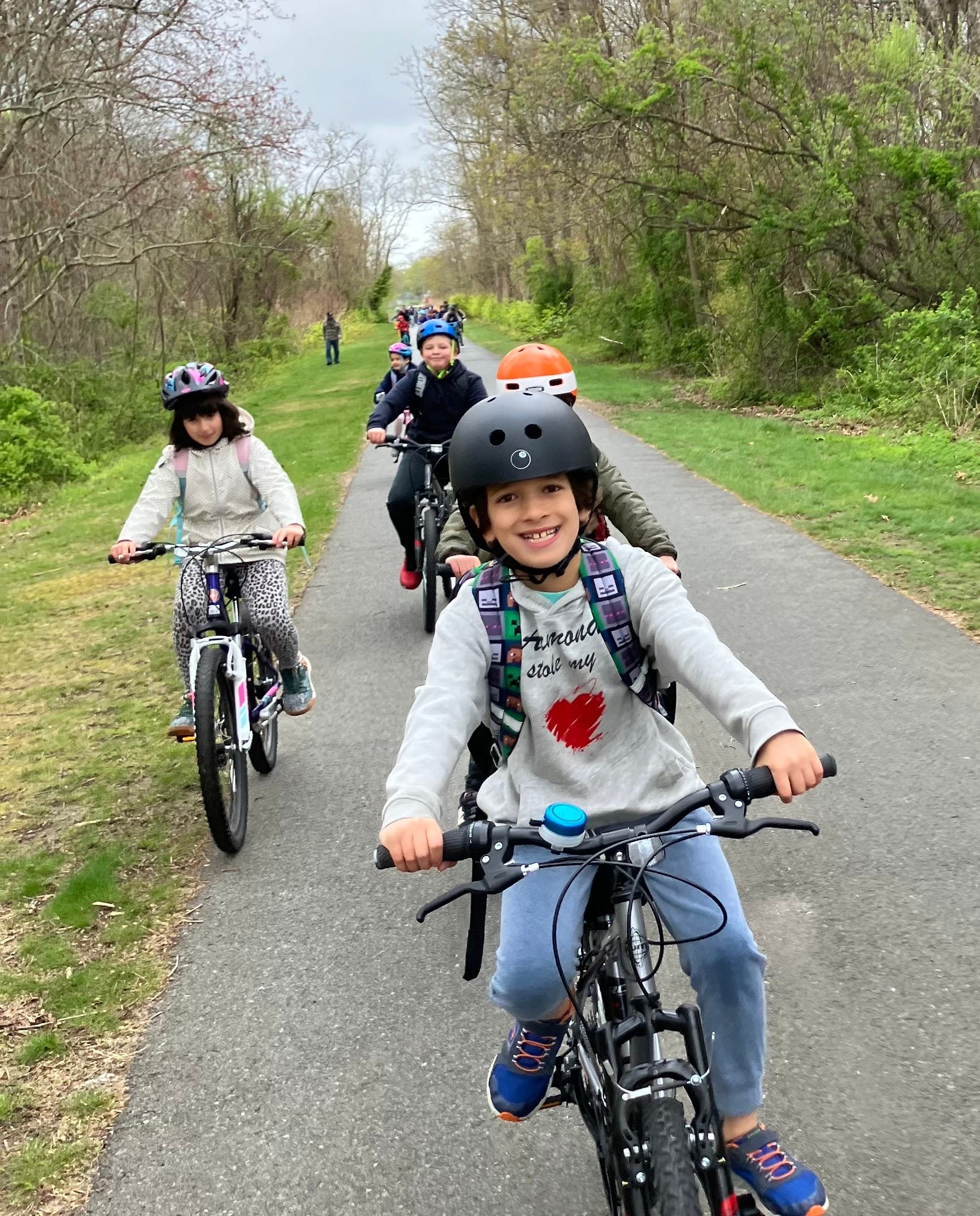From a Nice Amenity to a Vital Asset
This article was originally published, in slightly different form, on Strong Towns member Will Gardner’s Substack, StrongHaven. It is shared here with permission. All images for this piece were provided by the author.
When it was first proposed in the mid-90s, the Fort Phoenix Bike Trail (aka “the bike path”) in Fairhaven, Massachusetts, faced some vociferous opposition. Change, particularly in suburbs where people often expect things to stay the same, is often seen as a threat, regardless of the nature of that change.
(Source: The Standard-Times.)
The opponents, who brought a lawsuit that ultimately failed, said they were not opposed to having a bike trail, they were just worried about traffic, safety, and parking issues. These same concerns were used to successfully kill bike path projects in nearby Westport and Dartmouth. Fortunately, over a decade later, I don’t think anyone would argue that the bike path has caused any traffic, safety, or parking issues in town.
Our little rail trail is an undeniable asset. Bird watchers come there for the dawn patrol. Dog walkers come out next. Friends meet there to walk and talk. And, of course, people of all stripes ride their bikes!
The view from the new extension to the bike path in Mattapoisett.
It’s not a stretch to assert that the Fort Phoenix Bike Trail increases the value of land in the surrounding neighborhoods. Listings for properties anywhere nearby never fail to mention it. Studies in other communities have estimated that similar rail trails have increased property values of surrounding homes from 3% to 5%. Even if we assume that it only increases surrounding property values by 1% on net, that’s hundreds of thousands of dollars in additional annual tax revenue for the town.
From a Nice Amenity to a Vital Asset
I think most people are aware of the above benefits. What I think gets lost in the conversation about the bike path is that, in addition to its recreational value, it’s an increasingly important part of our transportation system.
Riding the bike path in the morning, I see a growing number of people (many on e-bikes) headed east toward the town center or New Bedford on their way to work. In the afternoon, I regularly see several older people walking home with their groceries. I see people in motorized wheelchairs running errands. And, of course, all the kids on bikes!
While this may not have been the primary motivation when it was created, the bike path evolved to become an accessible route for our most vulnerable neighbors: kids, the elderly, people with disabilities, and the poor. It’s also the way an increasing number of people to get to work, whether they work in Fairhaven or a neighboring town. This is a big deal!
This is a town where, in the past five years, two people have been killed by cars while walking to, or waiting at, a bus stop. I bring this up to emphasize that the role the bike path plays for our vulnerable neighbors is really important: for these folks, the bike path is less a recreational amenity than it is a welcome relief from the many other streets that de-prioritize their needs and, at times, their safety.
The Solidarity Dividend
When we create places where our most vulnerable folks can travel safely, they also end up being great places for everyone else! The bike path is a street where everyone is able to get where they’re going without having to constantly check over their shoulder for cars, without having to wear blinking lights in order to be seen, and without having to shout over the sound of traffic to chat with a friend. It’s no wonder that so many people go to the bike path to walk their dogs or walk with friends.
Maintaining Our Investment
At an upcoming Town Meeting, our director of public works, Vinnie Furtado, is going to propose reallocating a portion of funds ($125k) from the general road maintenance capital line to cover the last third of the funding we need to re-pave the bike path. Since it was first officially opened in 2011, the path has never been resurfaced. It’s starting to show its age, with large gaps and bumps in places causing significant hazards.
Given the popularity of the bike path, I’m optimistic this proposal will pass Town Meeting. We’re lucky to have a thoughtful guy running the board of public works—Furtado’s been working on finding a way to support the bike path renewal for a while. The funding proposal is the result of conversations between the board of public works and our town Bikeways Committee. As both a Bikeways member and a voting member of Town Meeting, I’m going to voice my support for approving this funds transfer. What I hope I can adequately convey to my neighbors in Town Meeting is how the bike path is no longer just a fun extra for the town. It serves an essential role as the heart of active transportation in the Haven. When we invest in the bike path, we show our most vulnerable neighbors that we see them while creating something that benefits all of us.
Will Gardner is an education consultant and the founder of Alma del Mar Charter Schools. He’s currently scheming about how to improve his town, but he’s happy to help you with whatever you’re working on. You can find him at StrongHaven.substack.com.







Emily Hutcheson is a bike advocate in San Antonio, Texas, and a mom of three. She joins Tiffany on this episode of The Bottom-Up Revolution to discuss some of the initiatives she’s spearheaded to improve bike infrastructure in her city, including a bike club and bike bus.